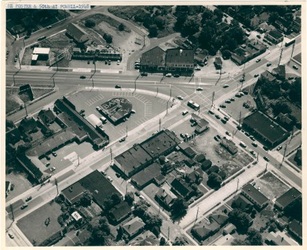Neighborhood Plan (1998)
In 1998, the Creston-Kenilworth Neighborhood Association published a Neighborhood Plan it created alongside City of Portland Planners. Take a look at their vision for the neighborhood!
Historical Help

3350 SE Francis. Station #25 built in 1912.
Can you help us? We would love to have historical photos and stories of the CKNA neighborhood to share on our website and Facebook page.
If you would like to submit please send an email here and include CKNA history in the subject line.
Thank you!
Kenilworth Park

The land occupied by most of the Kenilworth neighborhood was part of the land claim owned by Clinton Kelly, a Methodist minister from Kentucky who settled in the area in 1848. The neighborhood, platted in 1889, is named after Sir Walter Scott's 1821 novel Kenilworth, a romantic novel set in Elizabethan England. Many of the streets in the neighborhood took their names from this novel and other novels by Scott.
In 1910, Park Superintendent Emanuel Mische created a design for the park that was inspired by the park's natural topography and vegetation. The design included a bandstand, tennis courts, sports field, wading pool and play area, sand courts, walkways, and vista points. In 1912 a comfort station pavilion was added and remains an important historic feature of the park. Designed by Ellis Lawrence in the 20th Century Classic style, it is significant for its cubist form and decorative brickwork arches. Originally the arches were open and provided unobstructed views of the city; in 1983, in order to curb vandalism, metal doors were added to close off the pavilion when not in use. Today, the basic layout of the park remains intact and is indicative of the strength and appeal of Mische's original design.
(Courtesy of Portland Parks and Recreation)
Creston Park

Creston Pool 1930
One of the new wave of multi-use neighborhood parks during the City Beautiful movement, this property became a park due to a bond issue for parks and playground expansion approved by voters in 1919. The natatorium (swim facility) was constructed in 1925 along with two brick comfort stations. By 1926, tennis courts, horseshoe pits, and a ball field were added.













